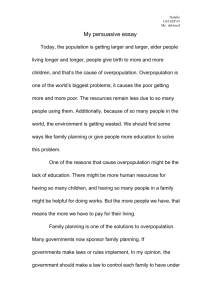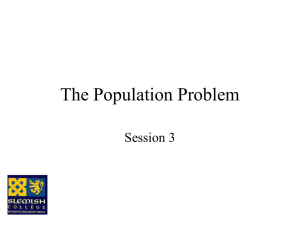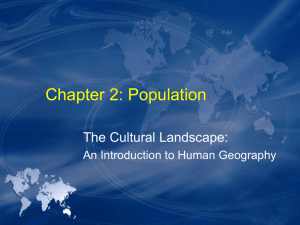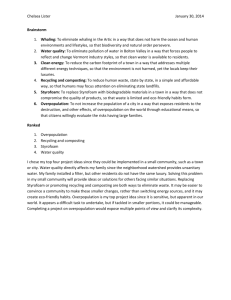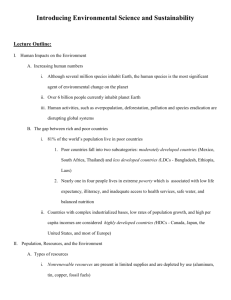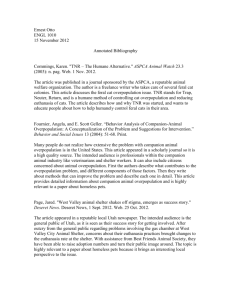Population Growth Impacts Sol Teacher
advertisement
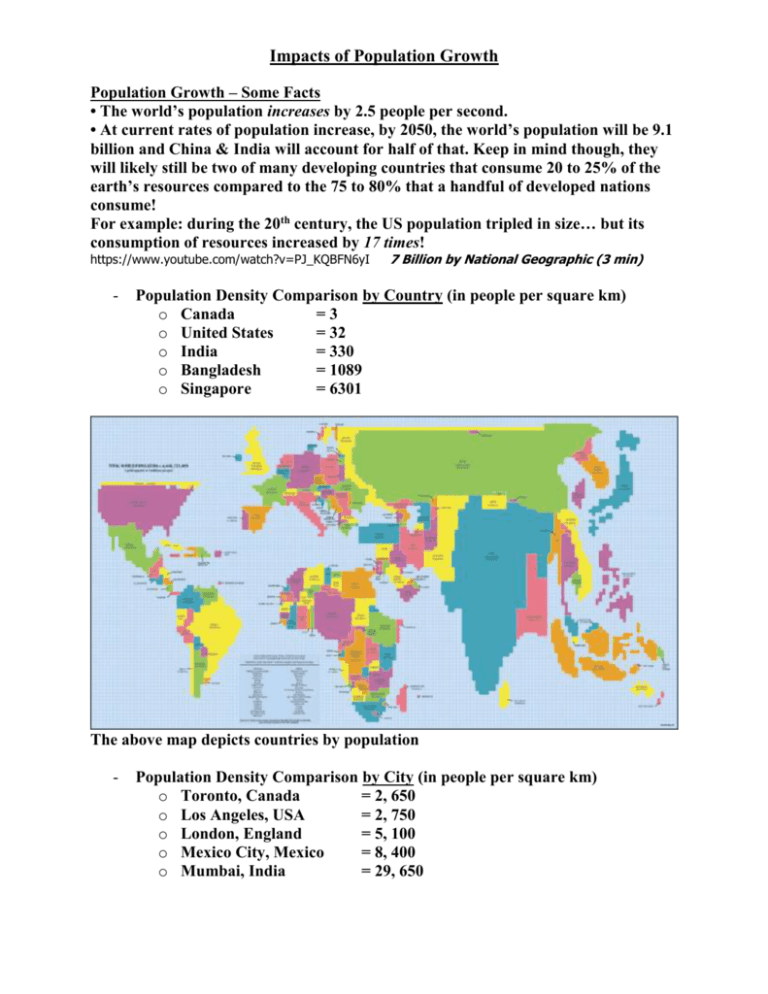
Impacts of Population Growth Population Growth – Some Facts • The world’s population increases by 2.5 people per second. • At current rates of population increase, by 2050, the world’s population will be 9.1 billion and China & India will account for half of that. Keep in mind though, they will likely still be two of many developing countries that consume 20 to 25% of the earth’s resources compared to the 75 to 80% that a handful of developed nations consume! For example: during the 20th century, the US population tripled in size… but its consumption of resources increased by 17 times! https://www.youtube.com/watch?v=PJ_KQBFN6yI - 7 Billion by National Geographic (3 min) Population Density Comparison by Country (in people per square km) o Canada =3 o United States = 32 o India = 330 o Bangladesh = 1089 o Singapore = 6301 The above map depicts countries by population - Population Density Comparison by City (in people per square km) o Toronto, Canada = 2, 650 o Los Angeles, USA = 2, 750 o London, England = 5, 100 o Mexico City, Mexico = 8, 400 o Mumbai, India = 29, 650 Mexico City Mumbai, India Factors Contributing to Overpopulation - Cultural Barriers (male virility associated with large families, lack of choice for women, etc.) – High infant mortality rates, so overcompensation with the number of births. (Parents expecting some of their children to die at an early age would have 8 to 10 children, hoping 5 or 6 would survive, many bodies needed for physical labour of agriculturally based economies, etc. - High death rate of older population, so young population increases as a “boom” – High cost and lack of accessibility to education and methods of birth control - Most resources used to support large young populations, so not much left over to invest in education, technology, diversity in economy, etc. so cycle continues Consequences of Overpopulation – Famine (long term hunger) – Urbanization with Sprawl (creation of shanty town, favellas, slums, etc.) *See Slide Show of Dubai Development - Increased rates/spread of infectious diseases – Shortage of jobs – Poverty – Shortage of natural resources – Pollution – Conflict / war Solutions to the Contributing Factors of Overpopulation – Better health care Technology and innovation – Sex education • Abstinence • Rhythm method • Birth control – Improved education of women In both the developing and the developed world, the number one solution to overpopulation is: the education of women: *Women not in the labour force have fertility rates more than twice that of women in the labour force *High income women have half as many children as low income women *A woman with a college degree will have half as many children as a woman who did not graduate from high school • Reducing the desire to have large families – This requires social marketing, such as popular TV soap operas that now air in many countries with educational messages on the virtues of small families. • Government can play a key role as well: – Government of Mexico is conveying the message that it is less macho to have 10 children with one pair of shoes amongst them than three children each with shoes, clothes and schoolbooks. – The Iranian government announced in 1992 they will deny subsidies and other benefits for newborn children if parents already have three children – In China, a couple who pledges 1 child only will receive more land, free medical and schooling and reduced taxes. – Chinese couples who have additional children without permission can be fined, reduced salary, no additional housing, no free medical or schooling for the child. (Compulsory abortions are seldom done. The abortion rate in China is 40% less than the U.S. rate.) – It took 60 years for the average American family size to shrink from 6 to 3.5 children, but it took only 23 years to accomplish the same transition in Indonesia and only 8 years in Thailand • Solutions right here at home… – Government support is needed…For example, US Government only spends 68¢ per person on family planning, – Practice abstinence to avoid unplanned pregnancies, etc. – Contribute to organizations such as Free the Children and Because I am a Girl that use your contributions to build schools with food programs and support the empowerment of girls and women through small business and land ownership programs. https://www.youtube.com/watch?v=TmozsmHpUqU Free the Children (2 minutes)
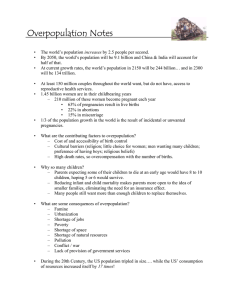



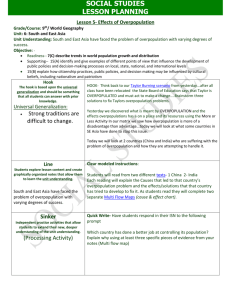
![[标签:标题]](http://s3.studylib.net/store/data/007514640_1-d06ca384d6a6efac05ae8c0c925f8675-300x300.png)
